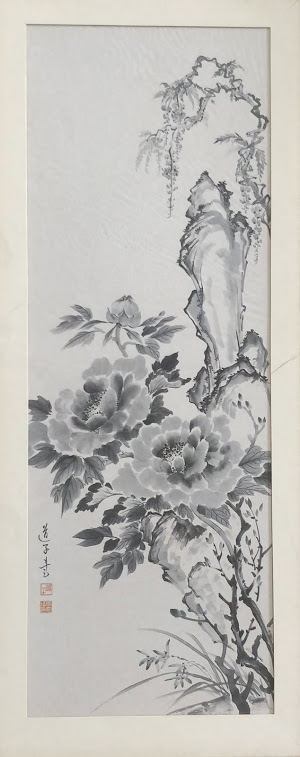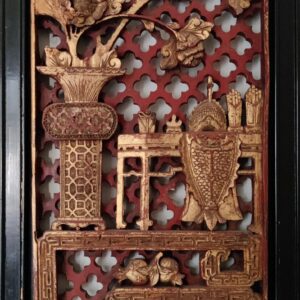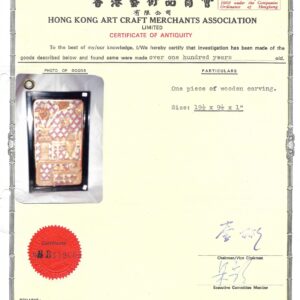Description
Peonies by Artist Michiko is a traditional Sumi-e Ink Wash Painting. The style reflects the classic Zen Masters as the does the subject matter. Also known as the ‘King of Flowers’ ( botan ) the peony is a Japanese flower that is used as a symbol of good fortune, wealth, nobility, bravery, and honour. The monochromatic shading with the use of Ink Stone brings to life the vibrancy and movement of a peony in full bloom.
Michiko was a Japanese Artist whose journey brought her to Nairobi, Kenya. During this time, she used her classical Sumi-e Ink Wash expertise and artisanship to create pieces inspired by the flora and fauna of the African landscape.
Sumi-e is an ancient technique of monochromatic drawing which originated from Chinese painting and was introduced to Japan in the second half of the 14th Century. The words sumi, meaning ink and e, painting are primarily based on the use of Ink Stone. Its origin is attributed to the Tang dynasty (618-908) and was introduced to Japan by Buddhist monks.
The simple but sometimes bold use of the brush often captures the spirit of the subject, and conveys a wide range of expression, from dynamic power to elegance and tranquility. The translation of the Sumi-e ink as “monochromatic” does not fully capture the rich spectrum of tones in the ink. Indeed, Japanese Sumi-e ink is one of the most nuanced substances in the world. This 2000 year old art form of Japanese brush painting is spiritually rooted in Zen Buddhism. Its earliest practitioners were highly disciplined monks trained in the art of concentration, clarity, and simplicity. These early Zen Masters dedicated themselves to the art form with spiritual intensity through long years of serious reflection and strict discipline.





Reviews
There are no reviews yet.